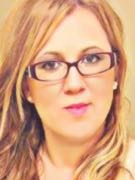
Please Note: The content on this page is not maintained after the colloquium event is completed. As such, some links may no longer be functional.
Burcu Kosar
Aurorasaurus: A citizen science project collecting real-time reports of the aurora to advance scientific research
Wednesday, February 22, 2017
Building 8 Auditorium - 11:20 AM
(Cookies at 10:30 AM)
*** Note Building 8 Location ***
Aurorasaurus is a new source of global, real-time data on the visibility of the aurora. The citizen science reports of the aurora are collected via the project's website and apps and are also mined from Twitter during active geomagnetic storm periods. Twitter mainstream data is filtered out in novel ways to extract useful information on real-time aurora sightings. In the data-starved field of heliophysics, these reports are important ground-truths of auroral visibility and scientifically useful data to validate empirical models predicting the extent of the auroral oval. In this talk, the elements of Aurorasaurus project well suited for information science will be highlighted as well as the results of scientific investigations that utilize citizen science aurora data.
I am an atmospheric physicist and my research has focused on studying the electrical coupling between thunderstorms and the Earth's middle and upper atmosphere through computational modeling. Of particular interest to me are sprites that are brief optical emissions associated with the electrical activity of thunderstorm systems. I received my Ph.D. degree in Physics from Florida Institute of Technology in Melbourne, FL in 2015. I have also received my M.S in Space Science and B.S. in Physics from the same institution. I have joined the Aurorasaurus team in December 2015 as a postdoctoral researcher. Auroras have always fascinated me with its magnificent display of lights and this project gives me the opportunity to apply my computational expertise from sprites to study auroras. Specifically, I analyze space weather data together with the citizen science data to improve our understanding and forecasting of the aurora.
IS&T Colloquium Committee Host: Nargess Memarsadeghi
Sign language interpreter upon request: 301-286-7040
